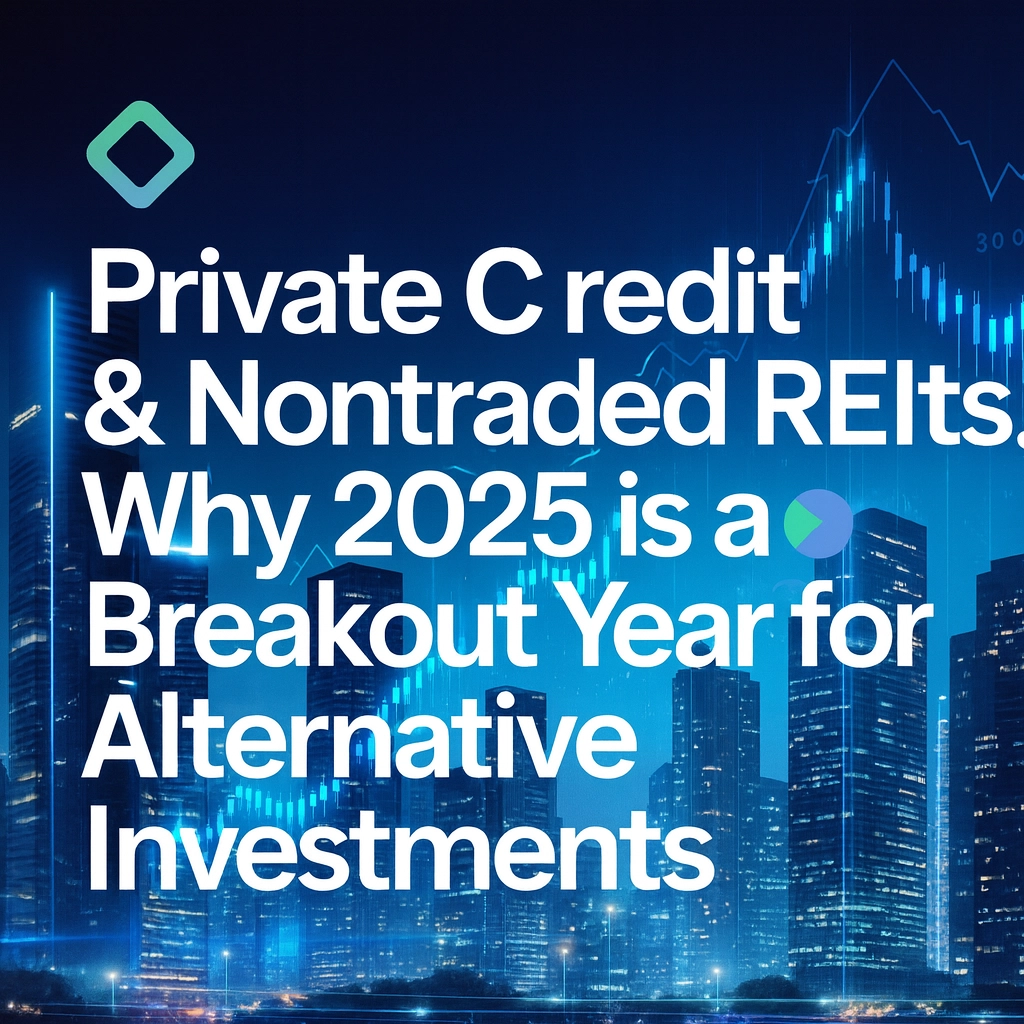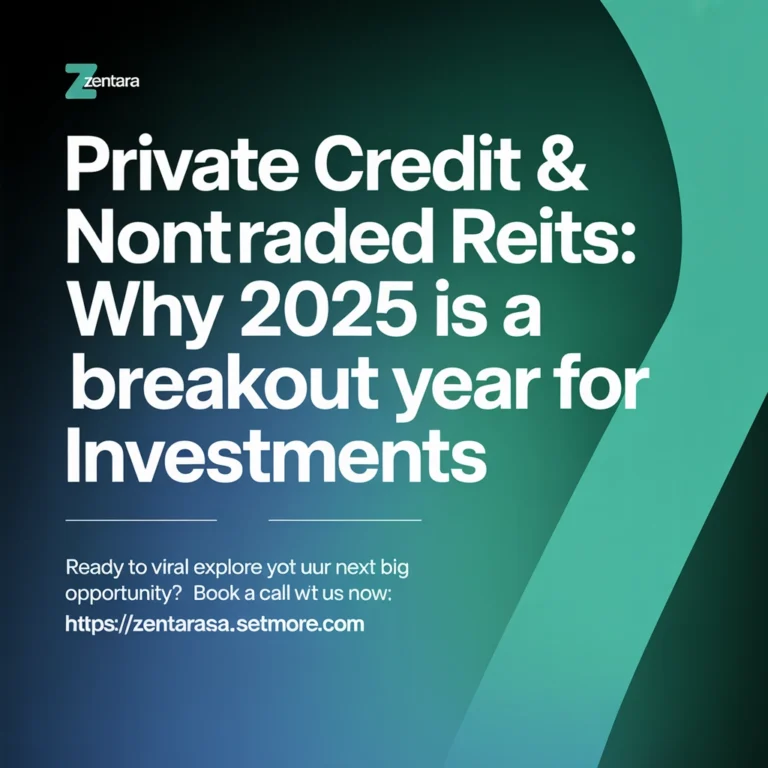Private Credit & Nontraded REITs: Why 2025 Is a Breakout Year for Alternative Investments

New Heights in Alternative Investments
If you've been watching the markets this year, you know that 2025 isn't just a blip on the radar—it's rapidly shaping up to be a transformational year for alternative investments, with private credit and nontraded REITs stealing the spotlight. Investors, institutions, and even first-timers are waking up to the freshness and opportunity in these so-called “alternatives.” But what's really driving this shift, and why now? Let’s break it down.
The Surge in Private Credit: From Fringe to Mainstream
Private credit isn’t new, but it’s never been this compelling—or this huge. The market grew from about $1.5 trillion in 2024, with forecasts eyeing $2.6 trillion by 2029. And in 2025? It’s everywhere, fueling middle-market companies, startups, and infrastructure projects that traditional banks are now less able (or willing) to finance.
So, what’s stoking this fire?
1. Banks in Retreat: The Lending Vacuum
Traditional lenders—big banks, in particular—are pulling back. Why? Regulatory changes post-2023’s regional banking crisis left many banks with tighter capital requirements and less appetite for risk. Suddenly, the door is wide open for private lenders with agile, creative solutions. Whether it’s direct lending, asset-backed deals, or customized financing for non-investment grade borrowers, private credit funds are stepping in and stepping up.

2. Investors Want Yield and Low Correlation
Let's be honest: the rollercoaster volatility of public markets in recent years has left many investors hungry for something… steadier and less correlated. Private credit fits the bill. Not only does it offer the potential for higher yields, but returns often move differently than the S&P 500, which means a more balanced portfolio during stock market hiccups.
3. Deal Flow Is Booming
Private equity shops have mountains of cash (aka “dry powder”) that needs to get out the door. This, in turn, leads to more demand for direct loans and flexible capital solutions that only private credit providers can deliver. In fact, 2025 has already seen a surge in bespoke deals, growth capital, and sponsorless lending—trends showing no signs of slowing down.
Nontraded REITs: Stability, Access, and Yield
Now, let’s talk about nontraded REITs—the understated cousin in the real estate world who’s having a serious glow-up.
1. The Crowded Real Estate Plays Are Changing
While public REITs tend to follow the ups and downs of public stock markets, nontraded REITs are less exposed to headline swings, offering investors a shot at stable income and diversification.
With higher borrowing costs tightening the screws on traditional developers, well-managed nontraded REITs can selectively invest in high-quality properties—think logistics hubs, healthcare facilities, and data centers—where they see long-term growth and income potential.

2. More Access, Less Daily Noise
What’s more, nontraded REITs are now easier for investors to access, thanks to digital platforms and lower minimums. Unlike their traded counterparts, nontraded REITs don't see knee-jerk reactions to market dips. This gives many investors peace of mind and the ability to think long term.
3. Income in an Era of Uncertainty
With higher interest rates making traditional income investments (like ordinary bonds) less predictable, many income-needing investors are re-examining the role of real estate. The steady, contractual cash flows from well-leased properties in nontraded REITs are attractive for retirement portfolios, insurance funds, and anyone looking to ride out volatility.
Technology: Lowering the Barrier to Entry
Gone are the days when only institutions or multimillionaires could invest in alternatives. Thanks to tech innovation, alternative investments are showing up in portfolios of all sizes.
- Digital platforms let individuals buy into private credit funds or nontraded REITs with a few clicks.
- Education tools and transparent reporting mean more people understand what they’re buying—and the risk/return trade-offs.
- Evolving regulations are also making it easier for advisors to guide “everyday” investors into alternatives as part of a balanced strategy.
The upshot? Alternatives are truly democratizing––accessible and understandable to anyone with an eye for opportunity.
Sector Breakouts: Where the Money’s Going
Let’s get specific. Which sectors are really shining in this new landscape?
Private Credit Favorites
- Healthcare: Financing for clinics, specialty care centers, and digital health startups is in high demand.
- Technology: SaaS companies and mature tech startups after VC funding rounds can now find tailored lending.
- Infrastructure: Power, water, transport—essential services need capital, and private credit offers it.
- Real Estate Lending: Beyond “vanilla” mortgages, funds are providing bespoke solutions for complex properties.
Nontraded REITs on the Rise
- Logistics and Industrial: Warehouses and distribution centers, thanks to the e-commerce boom.
- Data Centers: The AI revolution needs server space—the data center REIT is thriving.
- Medical Properties: Aging populations and changing healthcare delivery mean strong tenant demand.
- Multi-Family Housing: Urbanization and shifting demographics are boosting demand in certain regions.

The Risks: Not All That Glitters…
Before we get swept away by the breakout story, it’s worth a quick reality check.
- Liquidity: Alternatives are often less liquid than stocks or bonds. Know your holding period.
- Manager Skill: Who’s running the fund matters—a lot. Not all providers are created equal.
- Financial Conditions: Rising rates or tighter credit can pressure weaker borrowers or over-leveraged landlords.
- Transparency: Some alternative investments don’t have the same reporting standards as public vehicles.
A little extra homework (and the help of a reputable advisor) goes a long way.
The Big Picture for 2025 and Beyond
The wave of capital into private credit and nontraded REITs isn’t a short-term fad. With traditional banks on the sidelines and technology chipping away at old barriers, alternatives are no longer just “alternatives”—they’re heading into the investment mainstream. Institutions are driving the charge, but individuals are catching up fast, and the pipeline for new deals, sectors, and structures is brimming with promise.
If you’re seeking new ways to diversify, build income, or simply keep your portfolio on the cutting edge, now’s the time to explore.
Curious how Mansa Investments might be able to help you take advantage of these trends? Don’t just wonder—let’s talk! Book your free strategy call with our team and start building your alternative investment game plan: Schedule your call here.







